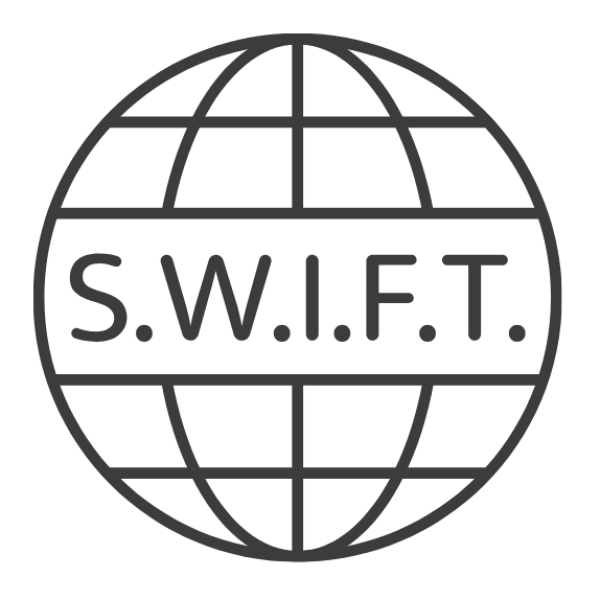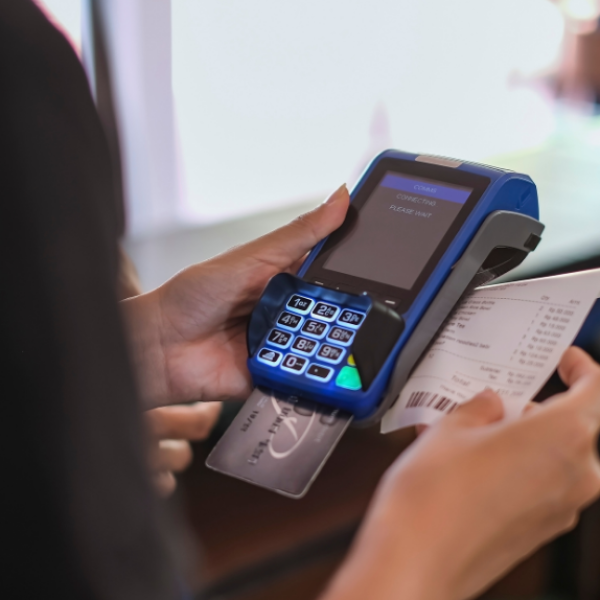If you’re in the United States and need to send a payment to a business in Germany, Venmo won’t be suitable. However, that doesn’t mean there aren’t secure and efficient alternatives for transferring your funds internationally.
The Society for Worldwide Interbank Financial Telecommunications (SWIFT) network provides a reliable platform for businesses to make international transfers from their bank account to a recipient’s account. Established in the 1970s, SWIFT has become the leading facilitator of international payments worldwide.
Now, let’s explain how SWIFT payment functions.
In This Article
ToggleWhat is SWIFT?

SWIFT, or the Society for Worldwide Interbank Financial Telecommunication, facilitates electronic transactions through intermediary banks, enabling international fund transfers. Although SWIFT does not transfer funds directly nor functions as a bank, it provides a secure means for banks to send payment orders to each other using specific SWIFT codes. SWIFT payments are known for their speed, accuracy, and security in international money transfers.
Fundamentally, SWIFT operates as a communication network that allows banks, credit unions, and other financial institutions to share crucial information about financial transactions. Introduced in 1973, SWIFT was developed in response to the need for a dependable and efficient system to handle global financial communications.
It was a major advancement in automating financial transactions, minimizing the need for manual processing, and reducing error risks. Over the decades, SWIFT has adapted to the evolving demands of the financial sector. Headquartered in Belgium, SWIFT is organized as a cooperative society under Belgian law. It is managed by its member financial institutions that elect a Board of Directors to oversee operations and guide strategic decisions. This cooperative structure helps ensure that SWIFT remains accountable to its users and adapts to their requirements.
The main goal of SWIFT is to facilitate the swift, precise, and secure exchange of financial transaction information among institutions. This involves not just transferring funds but also sharing vital details about the transaction’s parties and purposes. SWIFT’s standardized messaging system guarantees clarity and uniformity in these communications.
Who Owns the SWIFT Network?
A single entity does not own the SWIFT banking system but is a cooperative owned by its members. Approximately 3,500 member organizations hold shares in this cooperative, which is based in La Hulpe, Belgium. Oversight is provided by the central banks of the G10 nations, alongside the European Central Bank and the National Bank of Belgium. Governance is handled by a board of 25 directors elected by SWIFT shareholders, who are tasked with managing the cooperative’s daily operations and promoting the SWIFT system worldwide. Their responsibilities also include maintaining neutrality and overseeing the security, operational reliability, risk management, and resilience of the SWIFT infrastructure.
Originally, SWIFT included 239 financial institutions from 15 countries. Within four years, this number grew to 518 institutions from 22 countries. Today, SWIFT is utilized by over 11,000 banking institutions spread across more than 200 countries.
Understanding the Functioning of the SWIFT Network

Consider SWIFT as a digital intermediary facilitating communication between banks. Each participating bank establishes a reciprocal account with another; for example, Bank of America may set up an account with Deutsche Bank and vice versa, each depositing funds to ensure they can handle requests through SWIFT.
These accounts are known as “Nostro” accounts from the perspective of the bank depositing funds, while the receiving bank refers to the same account as a “Vostro” account, maintaining a corresponding ledger. Each bank involved in the SWIFT system has its own Nostro account.
The process utilizes the SWIFT network for sending messages to transfer money. Since the funds for SWIFT payments are already positioned in the recipient’s bank, international wire transfers aren’t necessary. The completion of a transfer request involves merely reallocating funds from one Nostro account to another and then disbursing them to the final recipient, marking a key difference from processes like ACH.
How Long Do SWIFT Transfers Take?
Transfers via the SWIFT network are not immediate. The duration of a transfer can vary, typically taking between 1-4 working days, influenced by factors such as the destination of the transfer, time zones, and specific banking procedures. Each transaction must also undergo several anti-money laundering and anti-fraud checks, which can extend the processing time.
Additionally, if the two financial institutions involved do not have direct accounts with each other and need the services of an intermediary bank, this can further delay the transaction.
How to Complete a SWIFT Transaction?
To execute a SWIFT transaction, you should follow these steps:
- Contact Your Bank: Inform your bank about the details of the transaction, including the recipient’s name, bank’s name, account number, transaction amount, currency, and any other pertinent information.
- Fill Out the Necessary Forms: Your bank will supply you with the forms needed to start the SWIFT transaction. These forms generally ask for details about the sender (originator) and the recipient (beneficiary) of the funds, the amount to be transferred, and the currency used.
- Make the Payment: After filling out the forms, you need to provide the payment. This usually means transferring the designated amount from your account into your bank’s account designated for such transactions.
- Await Confirmation: Following the initiation of the transaction, you must wait for a confirmation that the funds have been successfully transferred. This waiting period can vary, taking anywhere from several hours to a few days, depending on the complexity of the transaction and the banks involved.
Be aware that SWIFT transactions can incur significant fees, particularly for smaller amounts, as multiple banks may levy charges. To avoid delays or errors in processing, it’s crucial to provide complete and accurate information.
Who Benefits from SWIFT and Its Offerings?
A variety of entities benefit from SWIFT’s offerings, which include banks, corporations, international employees, remittance service providers, regulatory bodies, and the overall global economy. These services enhance the safety and efficiency of international financial transactions. Here are some key beneficiaries:
- Banks and Financial Institutions: SWIFT offers a secure, standardized platform that enables banks and financial institutions to send financial messages and manage cross-border transactions. This system helps streamline payment procedures, cut operational costs, and increase efficiency in managing international payments.
- Corporations and Businesses: By utilizing SWIFT’s network, corporations and businesses ensure secure and effective operations in treasury management, cash handling, and international trade financing. The network supports them in making payments to suppliers, receiving funds from clients, and effectively managing worldwide financial operations.
- International Employees: SWIFT facilitates the process for employers to securely and efficiently send wages and other financial compensations to international employees’ bank accounts in their home countries. This guarantees timely and reliable money transfers, helping these employees support their families and fulfill financial commitments abroad.
- Remittance Service Providers: SWIFT’s infrastructure is pivotal in enabling international remittances. It allows providers to transfer funds worldwide, helping individuals support their families back home.
- Regulatory Authorities: The compliance and security features of SWIFT assist regulatory authorities in tackling financial crimes like money laundering and terrorist financing. SWIFT’s standards for messaging and transparency boost regulatory oversight effectiveness and strengthen the integrity of the international financial system.
What is a SWIFT Code?
A SWIFT code, also known as a Bank Identifier Code (BIC), is a unique identifier assigned to financial institutions that are part of the SWIFT network. This code, made up of either eight or eleven alphanumeric characters, plays a critical role in identifying a specific financial institution during transactions.
Here’s how a SWIFT Code is structured: “AAAA-BB-CC-123”. The first four characters (“AAAA”) represent the institution code. The next two characters (“BB”) are the country code. The following two characters (“CC”) indicate the location code within that country. The last three characters (“123”) are optional and specify a particular branch of the institution.
SWIFT codes are vital for international financial transactions, ensuring that money is sent and received accurately between banks. The standardized format of these codes facilitates consistent identification of financial institutions worldwide, which is crucial regardless of the institution’s location or the currencies involved in the transactions.
Additionally, SWIFT codes serve other purposes, such as aiding in regulatory reporting and compliance. They provide a reliable means of identifying financial institutions, which enhances the efficiency and accuracy of financial monitoring and reporting. This helps in combating financial crimes and maintaining the integrity of the global financial system.
SWIFT Payment Costs: What are the Fees Involved?
Making a SWIFT payment involves two primary types of fees:
- Transaction Fees: These fees vary by each participating bank or financial institution, and there’s a broad spectrum of costs. Typically, fees for outgoing transactions (where you initiate the payment) are higher than those for incoming transactions (where you receive an international payment).
- Foreign Exchange Fees: When converting one currency to another, banks apply foreign exchange rates and charge a service fee, usually ranging from 3% to 5% of the total payment amount.
Banks also pay SWIFT membership and usage fees, and they often pass these costs onto their clients. To manage these fees, three options are available:
- SHA (Shared): The costs are split between the payer and payee, with the payer covering the initiation fees and the payee handling fees related to receiving and currency conversion.
- BEN (Beneficiary): The payee assumes the SWIFT fees, receiving the net amount after fees are deducted.
- OUR: The payer agrees to bear all associated fees, ensuring the payee receives the full payment amount.
The chosen fee coverage option is clearly documented in the payment details, clarifying responsibilities for both parties. Discussing this arrangement in advance can help avoid surprises. International payments pose unique challenges, such as language barriers, country-specific regulations, and time differences, which can complicate transactions. Utilizing SWIFT for fund transfers can mitigate many of these challenges, facilitating smoother cross-border payments.
How SWIFT is Different from IBAN?
IBAN (International Bank Account Number) and SWIFT (Society for Worldwide Interbank Financial Telecommunication) are essential tools for facilitating international money transfers, each serving distinct yet complementary roles. IBAN is primarily used to identify individual bank accounts within specific countries or regions, essential for accurate and efficient payment routing. Conversely, SWIFT codes identify and facilitate communication with financial institutions globally, ensuring secure messaging and transaction processing.
Here’s a quick comparison:
| Aspect | SWIFT | IBAN |
| Purpose | Identifies financial institutions | Identifies individual bank account numbers |
| Components | Bank identifier, optional branch code | Country code, check digits, bank code, account number |
| Format | 8 or 11 alphanumeric characters | Up to 34 alphanumeric characters |
| Functionality | Enables secure messaging and transaction processing | Facilitates accurate and efficient routing of payments |
| Requirement | Essential for international money transfers | Mandatory for intra-European transfers and in some other countries |
| Implementation | Widely adopted by financial institutions globally | Mandatory in several countries |
| Scope | Used globally by financial institutions | Used within specific countries or regions |
Conclusion
SWIFT, or the Society for Worldwide Interbank Financial Telecommunication, stands as a cornerstone in the realm of global finance, providing a reliable and secure platform for international fund transfers. Since its inception in 1973, SWIFT has revolutionized financial communication, automating processes and ensuring the swift, precise, and secure exchange of transaction information among institutions.
SWIFT is an organization owned by its member financial institutions and governed by a cooperative structure. It is known for its neutrality and adaptability to meet the ever-changing needs of the financial sector. With a presence in more than 200 countries and over 11,000 banking institutions, SWIFT plays a crucial role in facilitating cross-border transactions, benefiting banks, corporations, international employees, remittance service providers, regulatory bodies, and the global economy at large. By using standardized messaging systems, SWIFT ensures clarity, uniformity, and efficiency in international financial communications, further solidifying its position as an indispensable tool in the modern financial sector.
Frequently Asked Questions
What is SWIFT?
SWIFT (Society for Worldwide Interbank Financial Telecommunication) is a global network enabling secure communication among banks for international transactions. It doesn’t transfer funds directly but ensures safe messaging for transactions.
How does the SWIFT system work?
SWIFT operates by transmitting secure messages between banks using unique codes like BIC and sometimes IBAN. If banks lack direct connections, intermediary banks step in, potentially increasing transaction time and cost.
What are the costs associated with using SWIFT?
SWIFT fees depend on message types, length, and volume, often passed on to customers as transaction and foreign exchange charges. Additional costs arise with intermediary banks’ involvement, affecting overall expenses.
How long do SWIFT transfers take?
SWIFT transfers typically take 1 to 5 business days, but the duration varies based on intermediary banks, countries involved, and required compliance checks.











